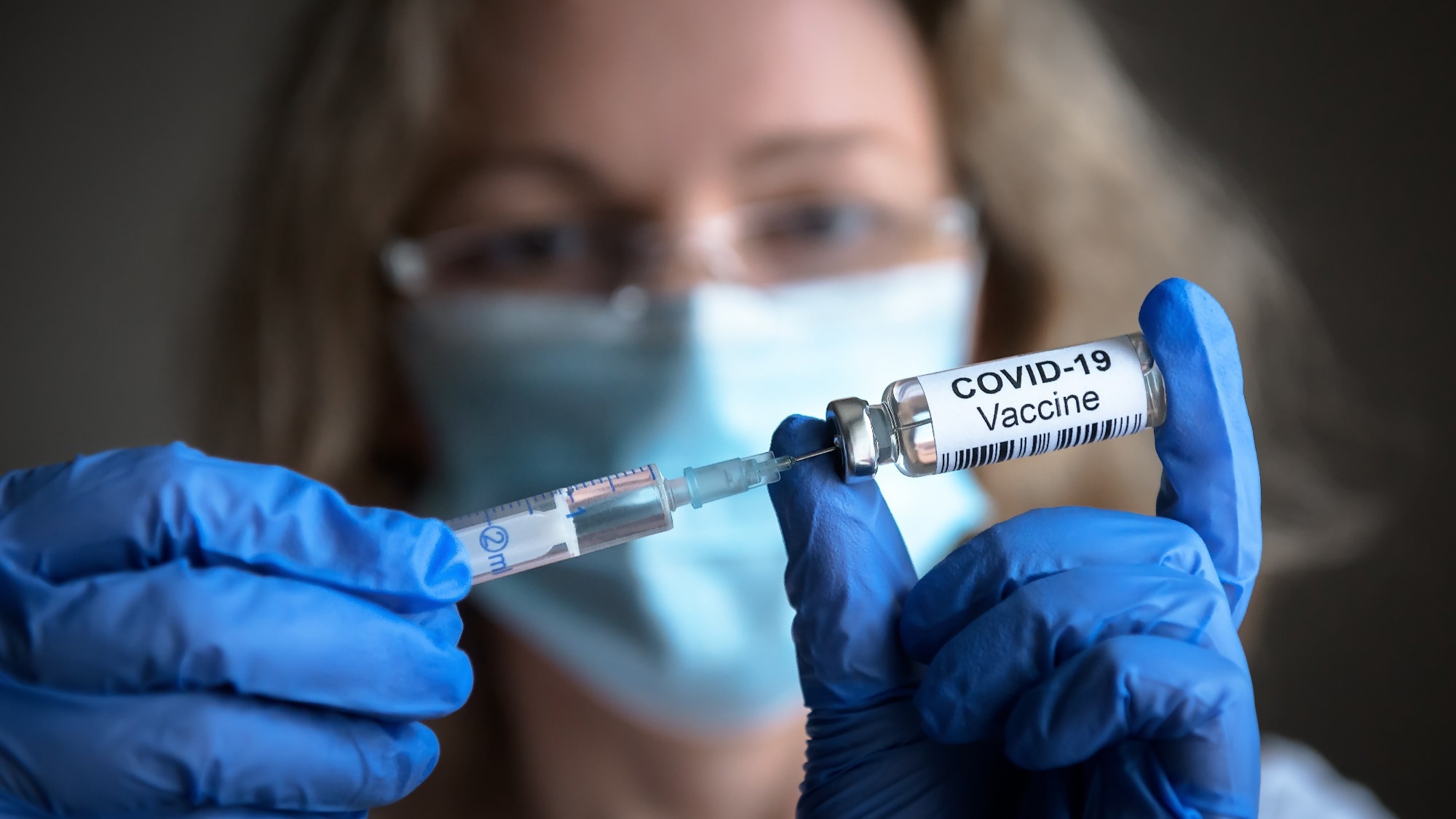A recent eClinicalMedicine study evaluated the safety and efficacy of the GBP510 vaccine, which contains self-assembling nanoparticles, against severe acute respiratory syndrome coronavirus-2 (SARS-CoV-2) infection.
 Study: Immunogenicity and safety of SARS-CoV-2 recombinant protein nanoparticle vaccine GBP510 adjuvanted with AS03: interim results of a randomised, active-controlled, observer-blinded, phase 3 trial. Image Credit: Viacheslav Lopatin/Shutterstock.com
Study: Immunogenicity and safety of SARS-CoV-2 recombinant protein nanoparticle vaccine GBP510 adjuvanted with AS03: interim results of a randomised, active-controlled, observer-blinded, phase 3 trial. Image Credit: Viacheslav Lopatin/Shutterstock.com
Furthermore, this study compared the immunogenicity of GBP510 adjuvanted with AS03 (GBP510/AS03) vaccine and the ChAdOx1-S (AstraZeneca) vaccine.
Background
The rapid spread of SARS-CoV-2 has resulted in the coronavirus disease 2019 (COVID-19) pandemic, which has claimed millions of lives worldwide. Several COVID-19 vaccines, based on different technologies, have been developed to contain the pandemic.
GBP510 is a recombinant protein vaccine that contains self-assembling nanoparticle components, which exhibit SARS-CoV-2 spike receptor-binding domains (RBDs), This protein adjuvanted with AS03 (hereafter GBP510/AS03), enhanced immunogenicity to the vaccine antigen.
Several commercially available COVID-19 vaccines require ultra-cold chain handling that limits their mass rollout capacity, particularly in low-income countries. GBP510/AS03 can overcome the aforementioned limitation since it can be stored in regular refrigerator temperatures between 2◦C and 8◦C.
The phase 1/2 study indicated that GBP510/AS03 was highly immunogenic and well tolerated among healthy adults between 19 and 85 years of age. However, this study did not determine the threshold level for immune correlates of protection based on antibody levels.
About the study
This phase 3 study aimed to evaluate the safety and efficacy of GBP510/AS03 against SARS-CoV-2 infection. The efficacy of this vaccine was determined based on neutralizing antibody titers against the ancestral SARS-CoV-2 strain, i.e., the D614G strain.
The current active-controlled, randomized, blinded clinical study was conducted at 38 sites across six countries including Thailand, South Korea, Ukraine, New Zealand, Philippines, and Vietnam. Two cohorts were designed which included individuals who were above 18 years of age and healthy.
Cohort 1 (immunogenicity cohort) contained individuals who did not have a history of SARS-CoV-2 infection or COVID-19 vaccination. Cohort 2 (safety cohort) included participants irrespective of their serostatus. At baseline, Cohort 1 contained a total of 1,950 individuals and Cohort 2 contained 2,040 individuals.
In Cohort 1, participants were randomized in a 2:1 ratio to receive GBP510/AS03 or ChAdOx1-S vaccine, while participants in Cohort 2 were randomized in a 5:1 ratio to GBP510/AS03 or ChAdOx1-S.
Study findings
In Cohort 1, 1,887 participants received at least one dose of the study vaccines, i.e., ChAdOx1-S or GBP510/AS03. More specifically, 1,259 individuals were present in the GBP510/AS03 group, while 628 individuals were in the ChAdOx1-S group. Following the first dose, 877 individuals from the GBP510/AS03 group and 441 from the ChAdOx1-S group received the second vaccine dose after 1-month interval from the first vaccine dose.
The long-term immunity was assessed after six months in 604 participants in GBP510/AS03 and 310 participants in the ChAdOx1-S group.
The current study indicated that immune responses triggered after two doses of GBP510/AS03 vaccine in seronegative adults were significantly more than similar doses of ChAdOx1-S vaccination.
This observation was based on the geometric mean titer (GMT) of neutralizing antibody and non-inferiority seroconversion rate (SCR) at 2 weeks after the second vaccination. The efficacy of neutralizing antibodies triggered after both vaccines was assessed using the ancestral D614G strain.
A higher level of SARS-CoV-2 RBD-binding IgG antibody was observed for GBP510/ AS03 compared to ChAdOx1-S after 2 weeks of the second vaccination. It must be noted that a higher immune response with GBP510/AS03 against the ancestral strain was observed irrespective of ethnicity, age, or gender.
Compared to ChAdOx-1S, GBP510/AS03 induced higher neutralizing antibody responses against the Delta and Omicron variants as well. A focus reduction neutralization test (FRNT) indicated a higher efficacy of GBP510/AS03 in both study cohorts.
Compared to a phase 1/2 study, a higher immune response was observed in the current phase 3 trial, indicating an increase in GMT from 8.18 to 272.12 IU/mL. In addition, a higher geometric mean concentration (GMC) of IgG binding antibody was found at 2 weeks after the second dose of GBP510/AS03 in the phase 3 trial.
The significant increase in immune response observed in this study could be attributed to CD4+ T-cell response after GBP510/AS03 vaccination.
The cellular immune response data revealed that both the study cohort exhibited insignificant amounts of CD8+ T cell responses, which play a vital role in controlling viral infection. Similar to the phase 2 clinical study of BNT162b2 reports, two doses of GBP/AS03 exhibited 36-fold in neutralizing antibody levels.
Notably, GBP510/AS03 exhibited a clinically acceptable safety profile with no adverse effect after six months of the second vaccination. Compared to ChAdOx1-S, a higher reactogenicity was associated with GBP510/AS03 vaccination.
However, the current phase 3 trial exhibited lower reactogenicity compared to the phase 1/2 study. Mild to moderate local or systemic solicited adverse events were associated with GBP510/AS03 vaccination. Interestingly, a higher level of adverse effect was found among Korean participants compared with Southeast Asian individuals.
Conclusions
The current study revealed that two doses of GBP510/AS03 induced robust neutralizing antibody immune responses against the ancestral SARS-CoV-2 strain compared to ChAdOx1-S. Notably, this COVID-19 vaccine also exhibited a clinically acceptable safety profile up to six months after second vaccination.